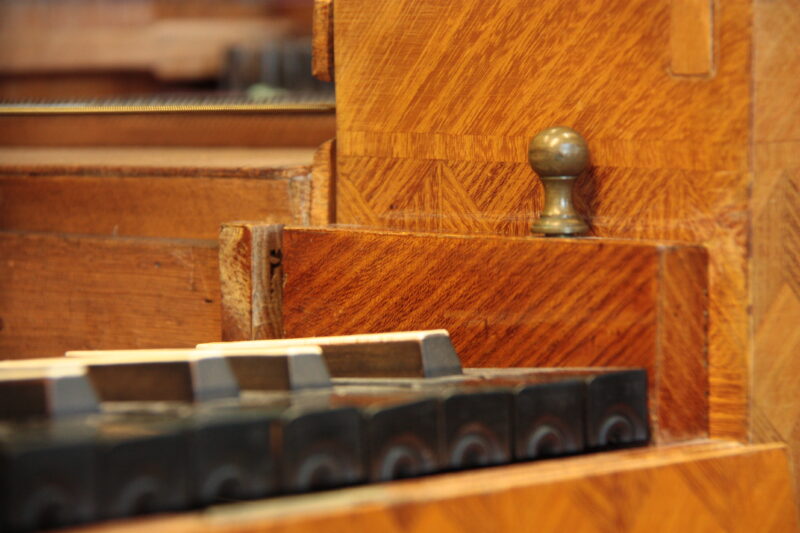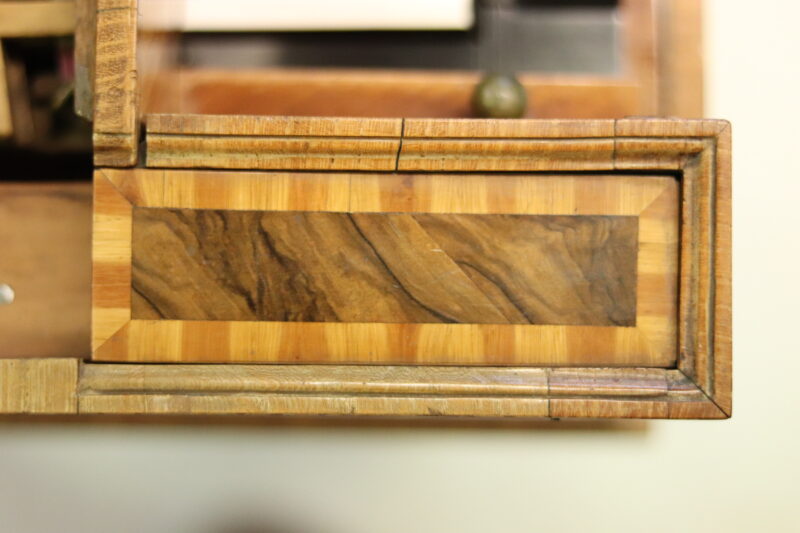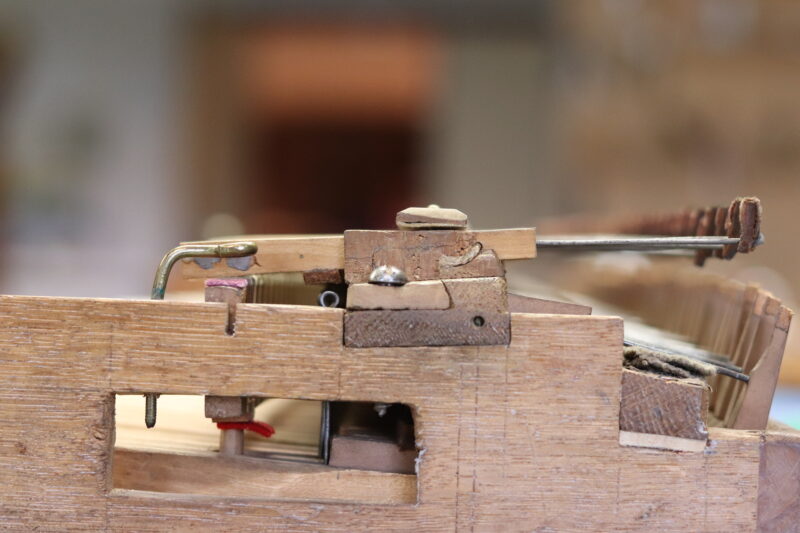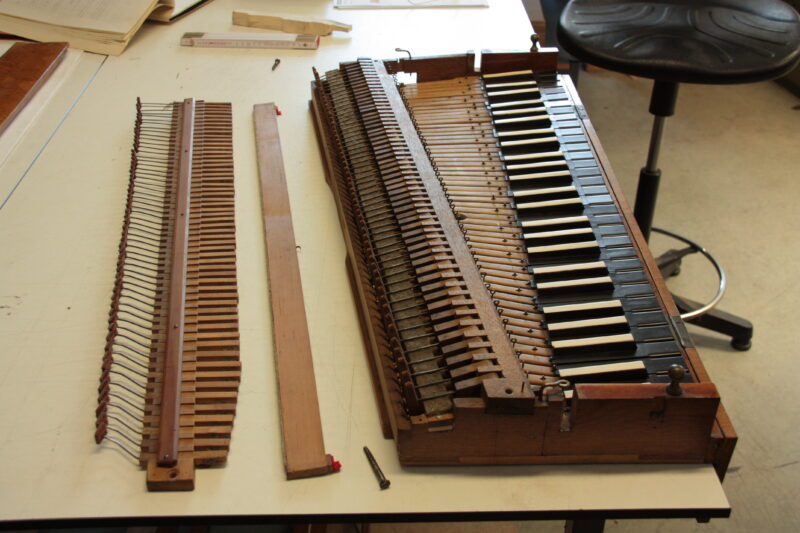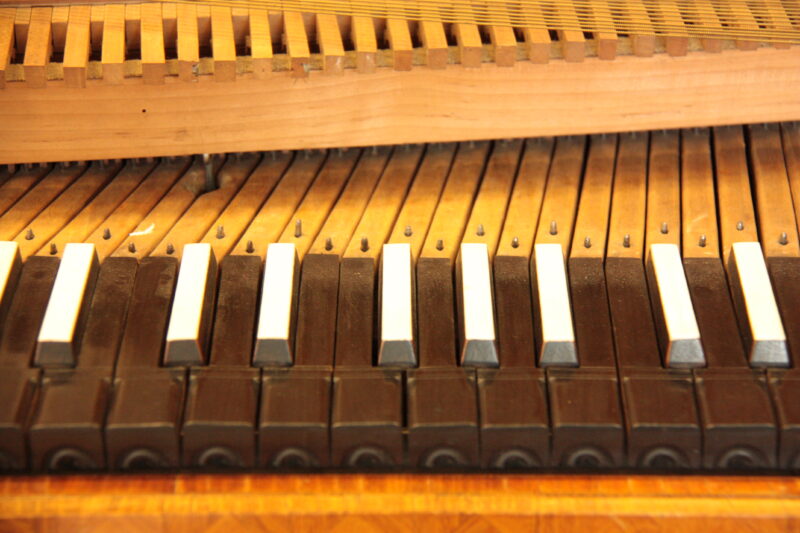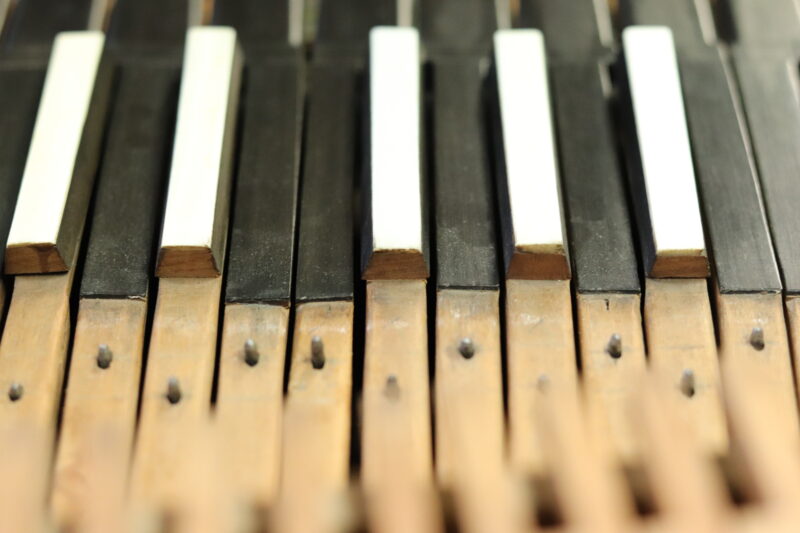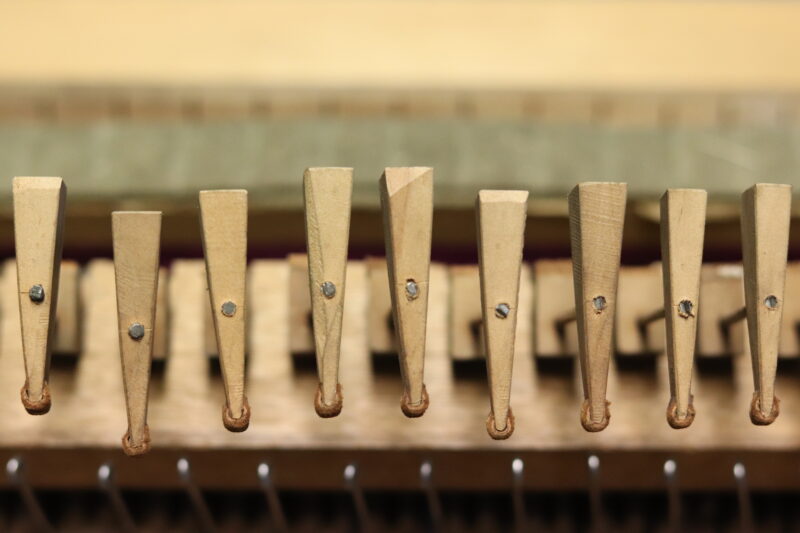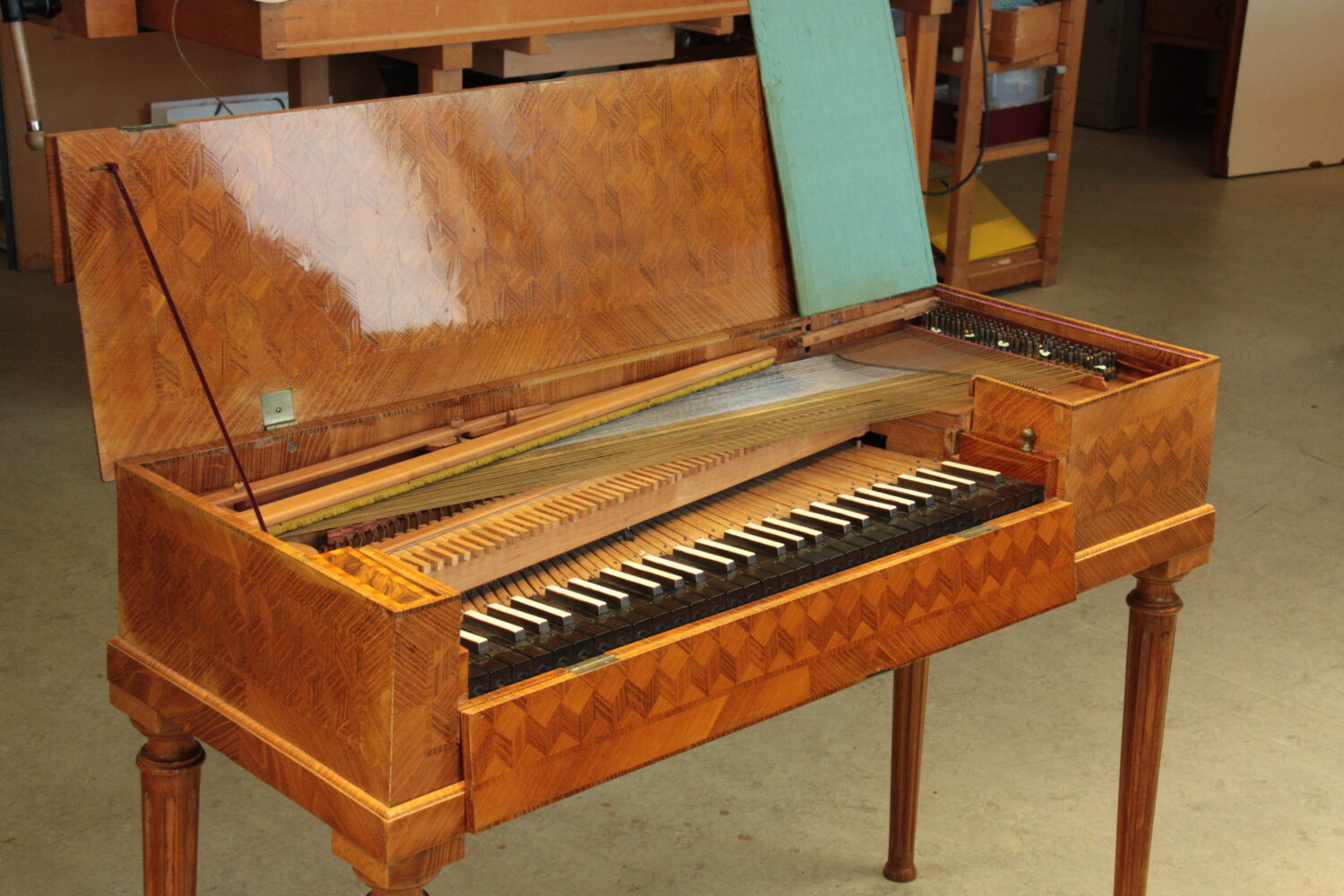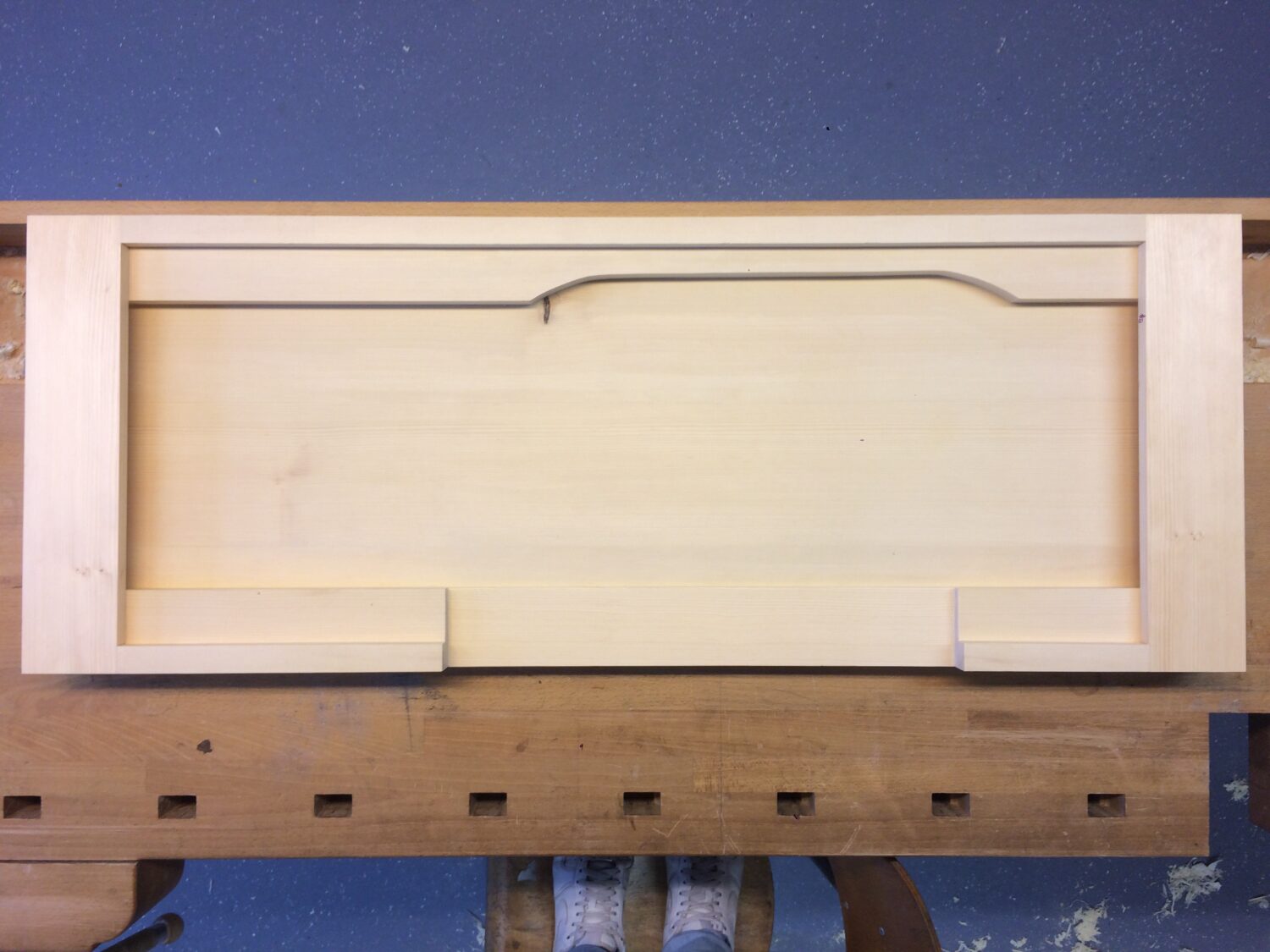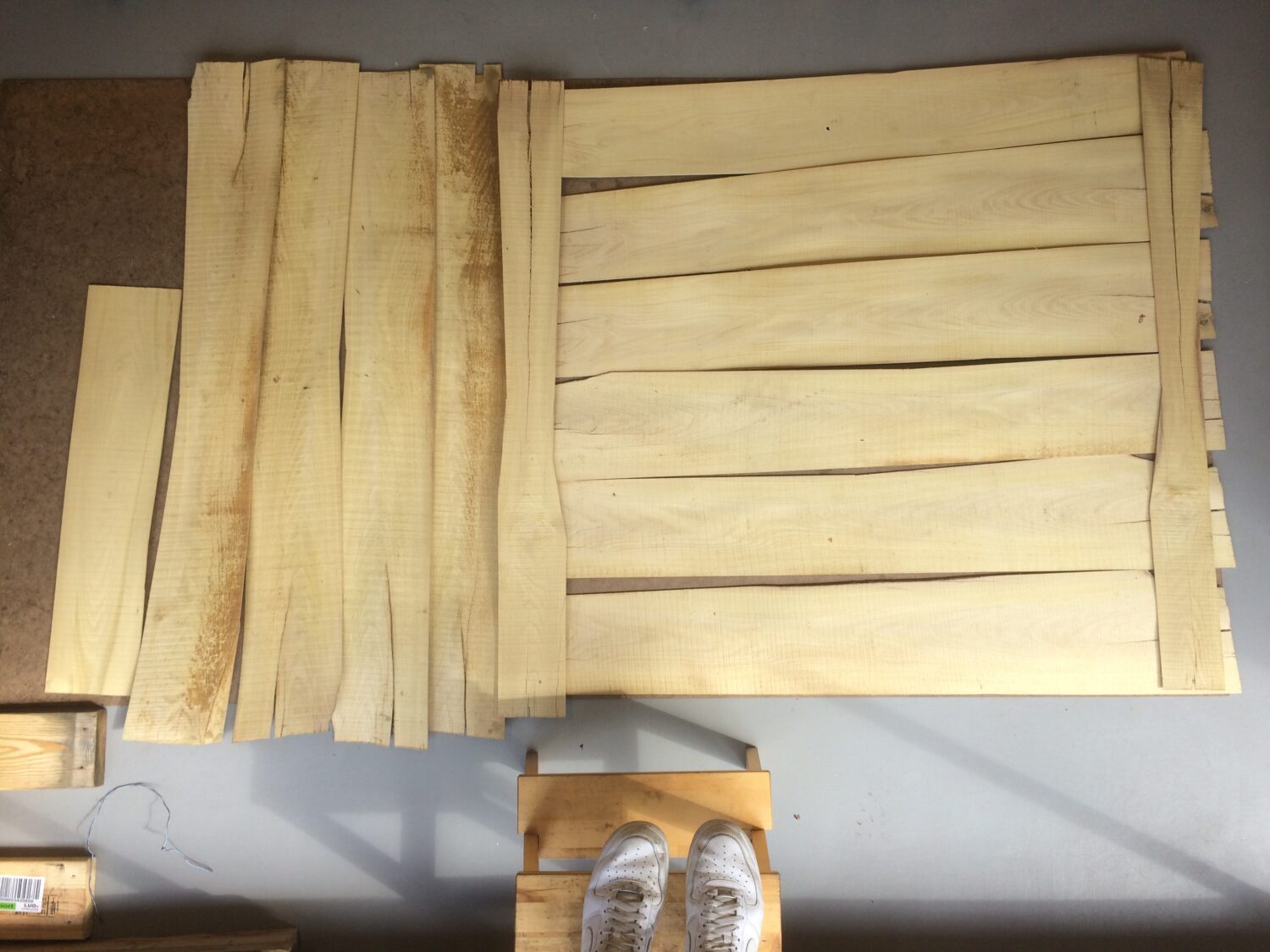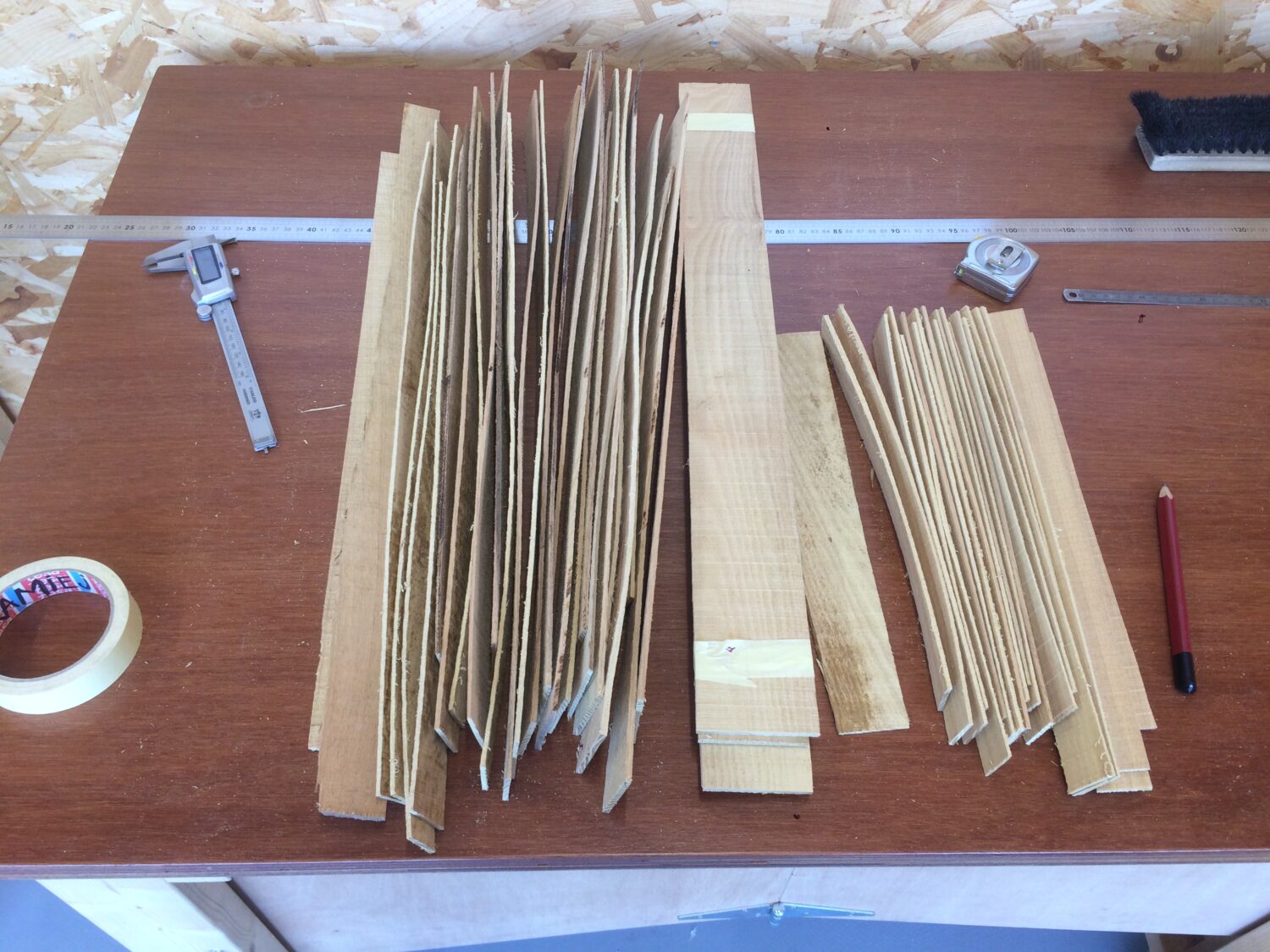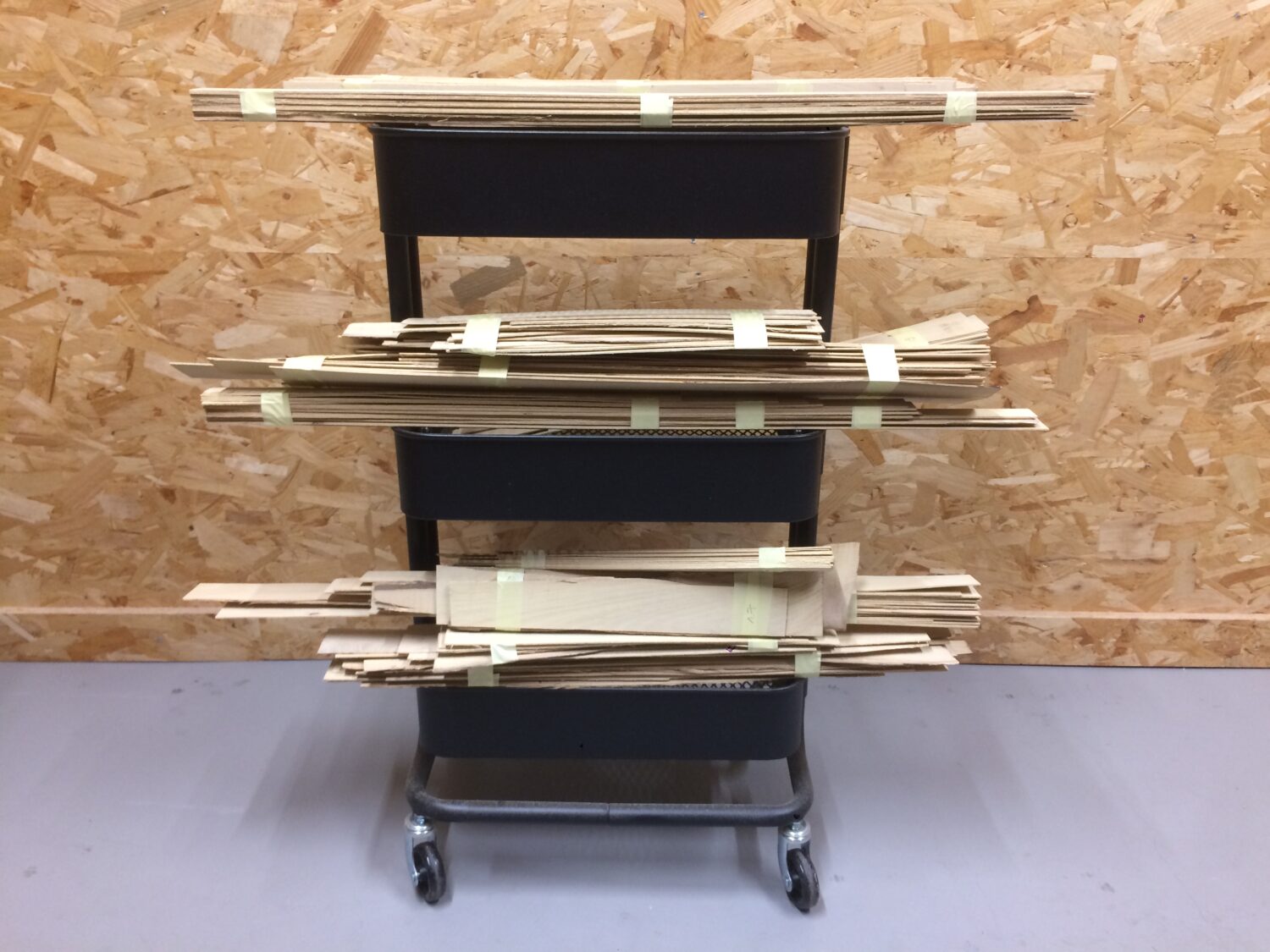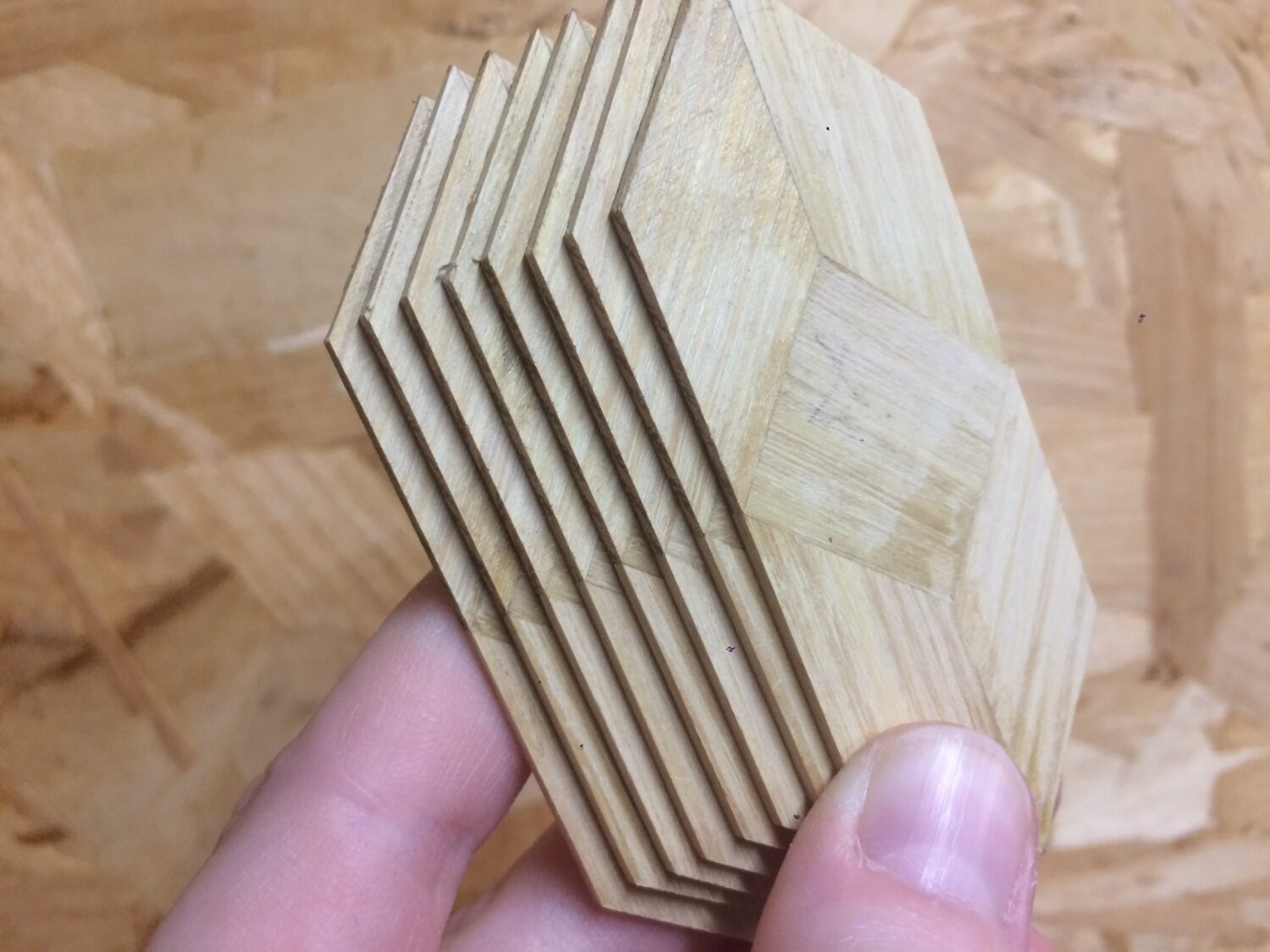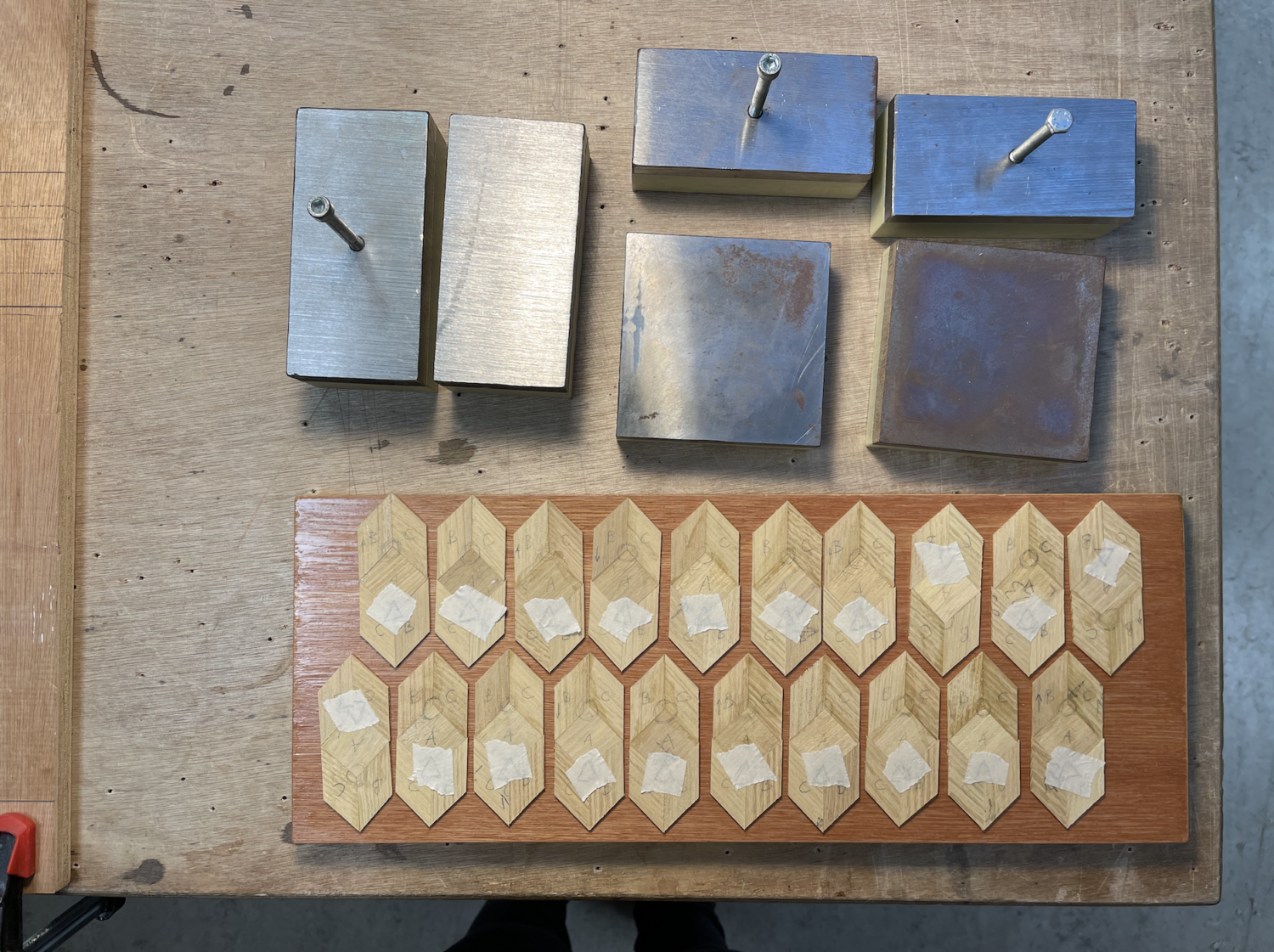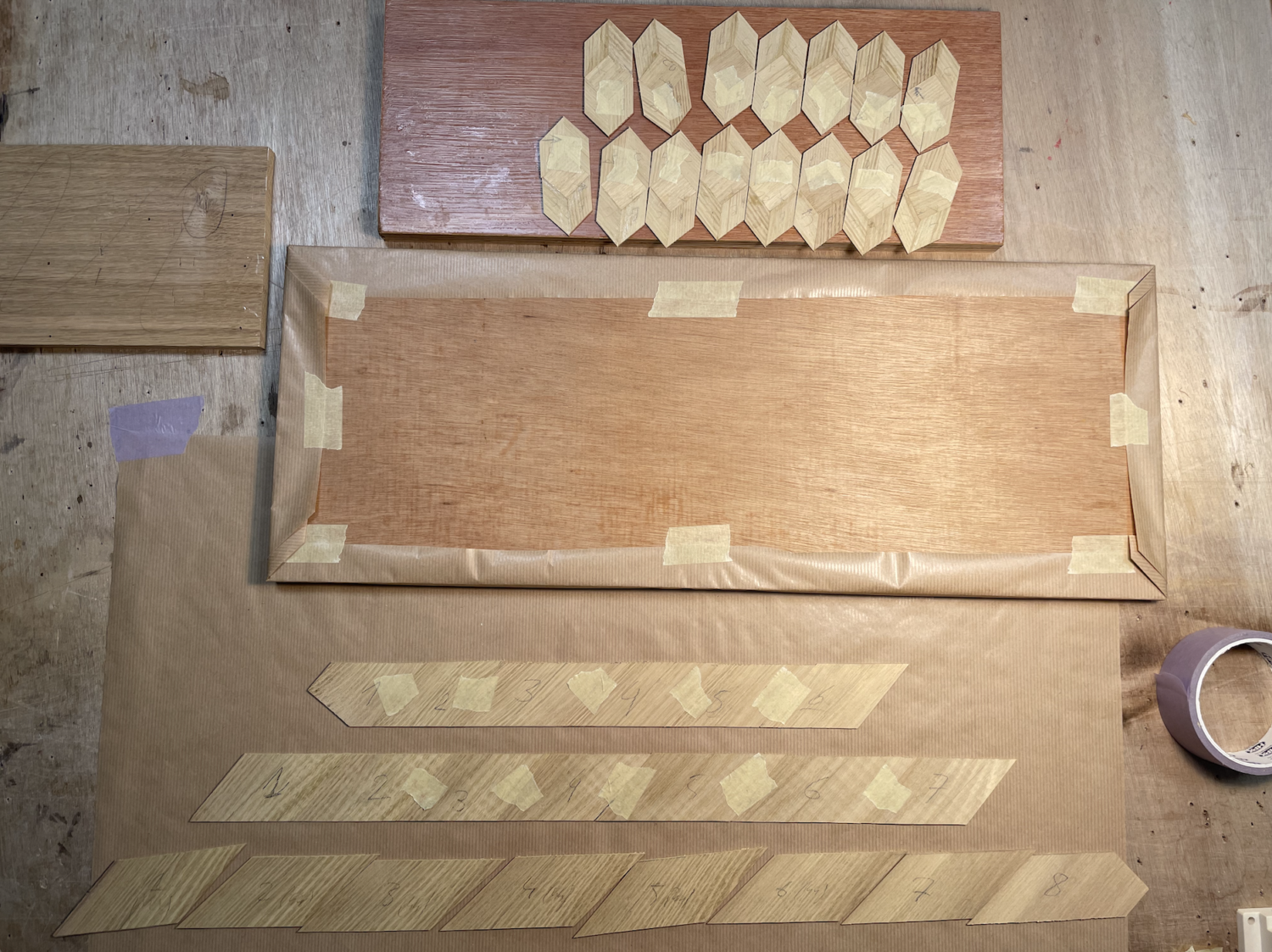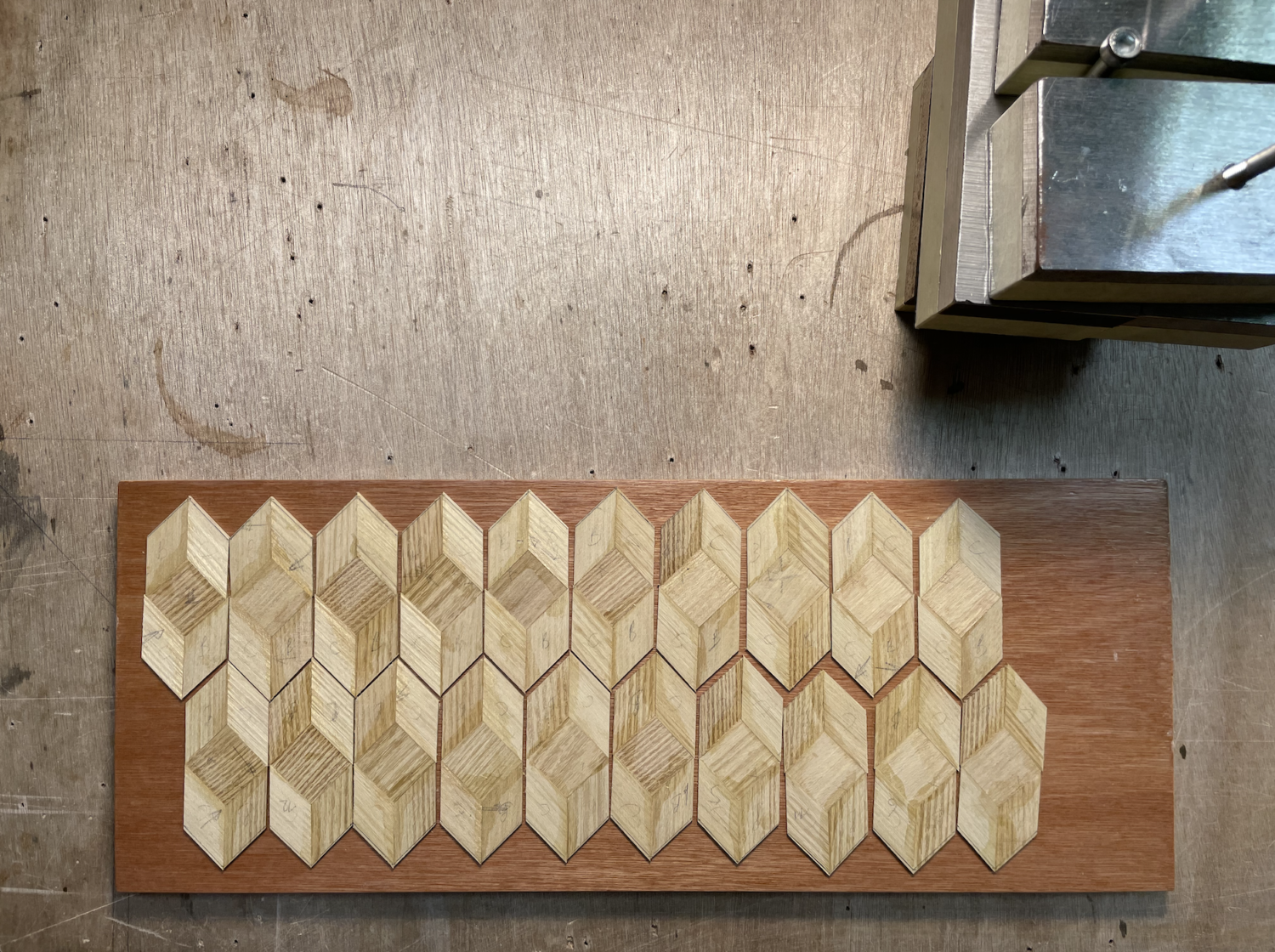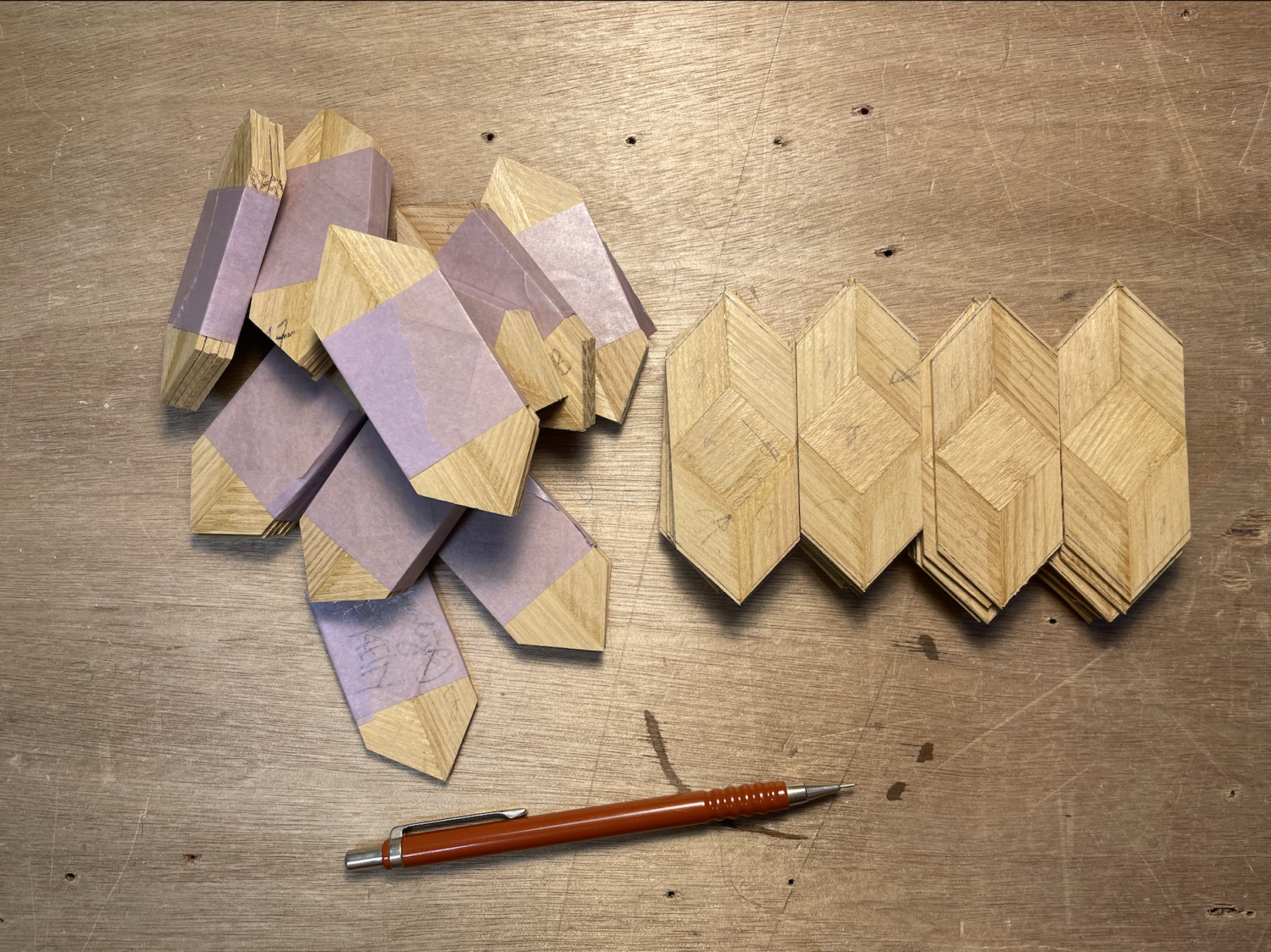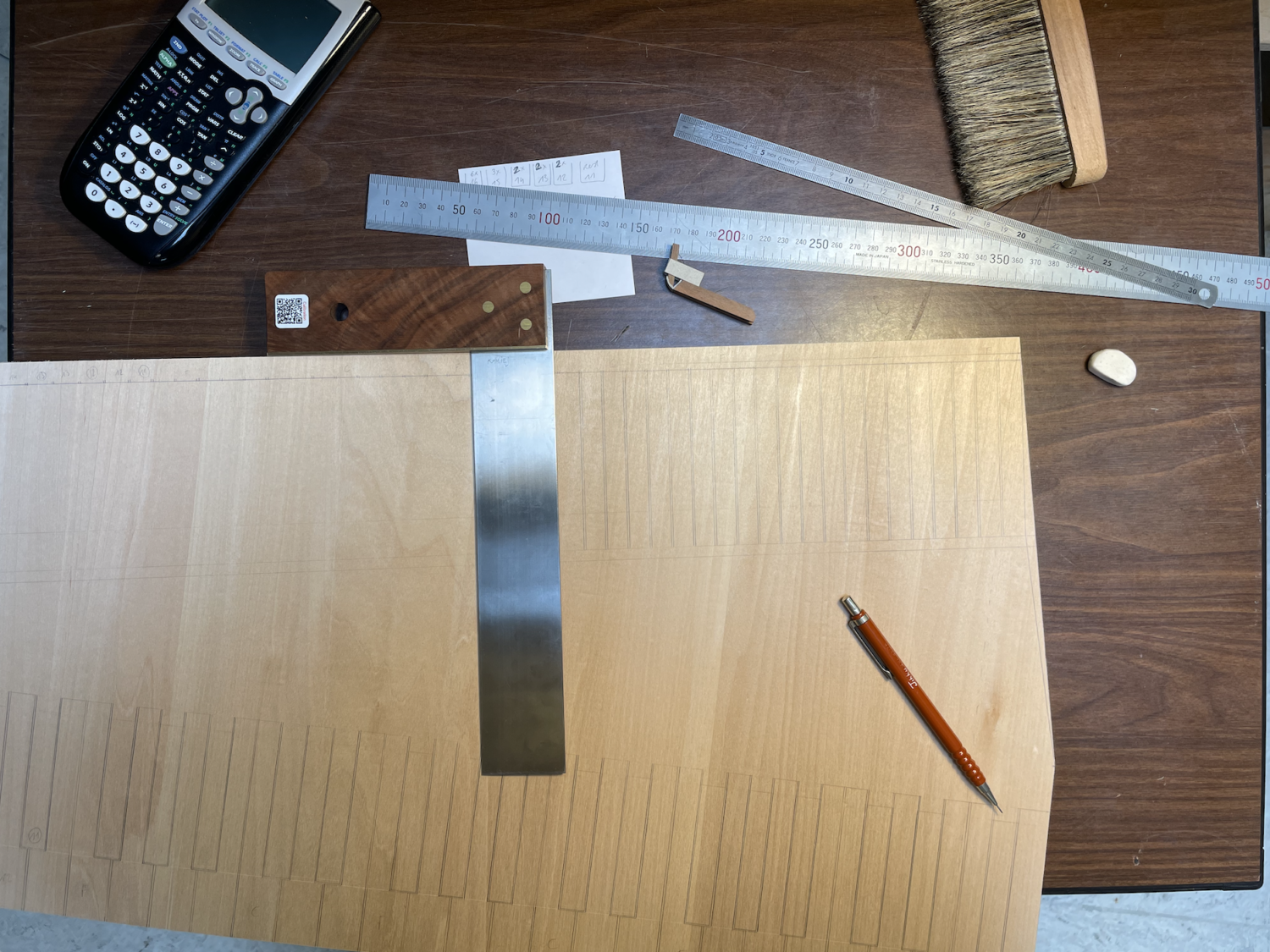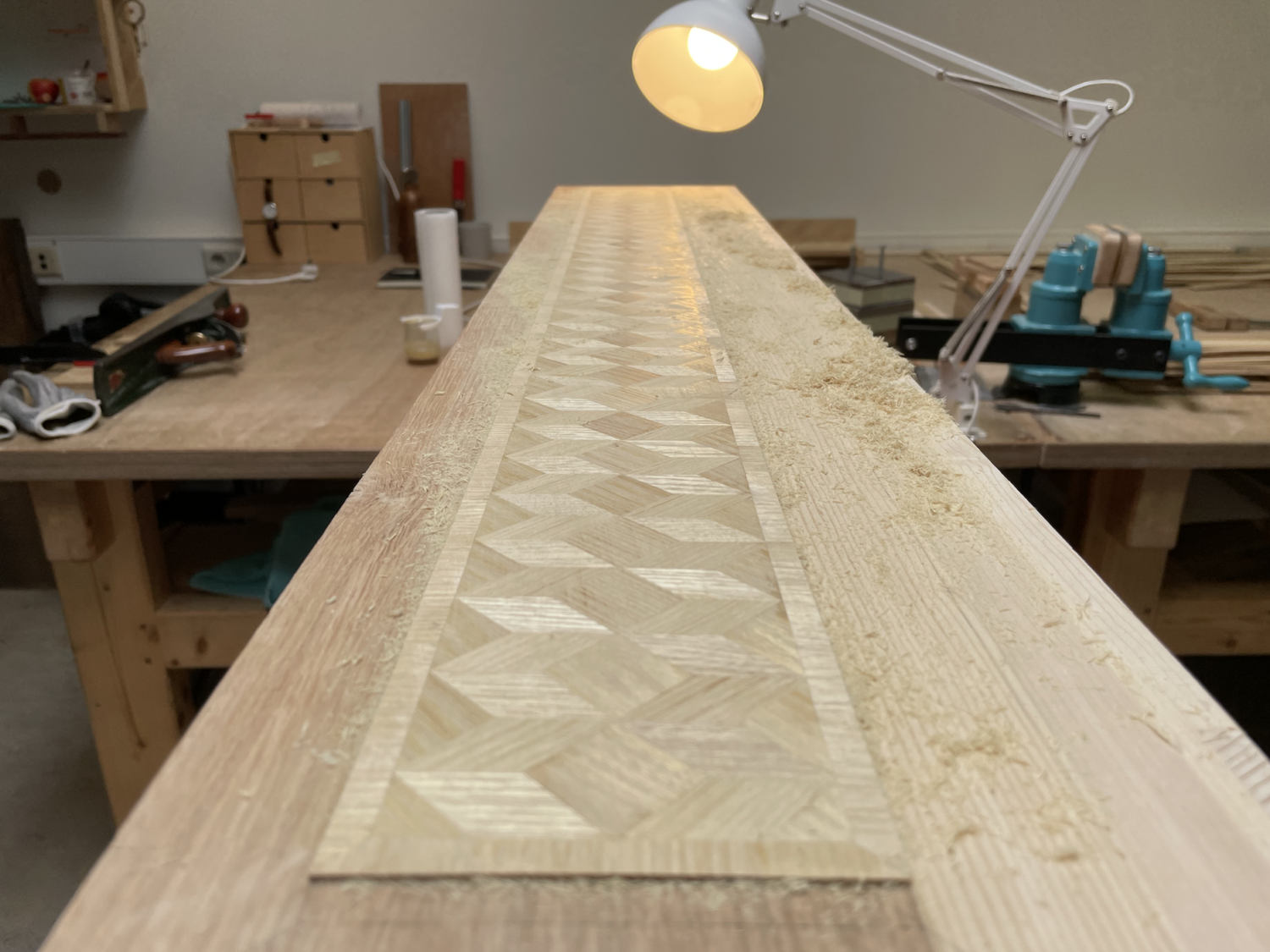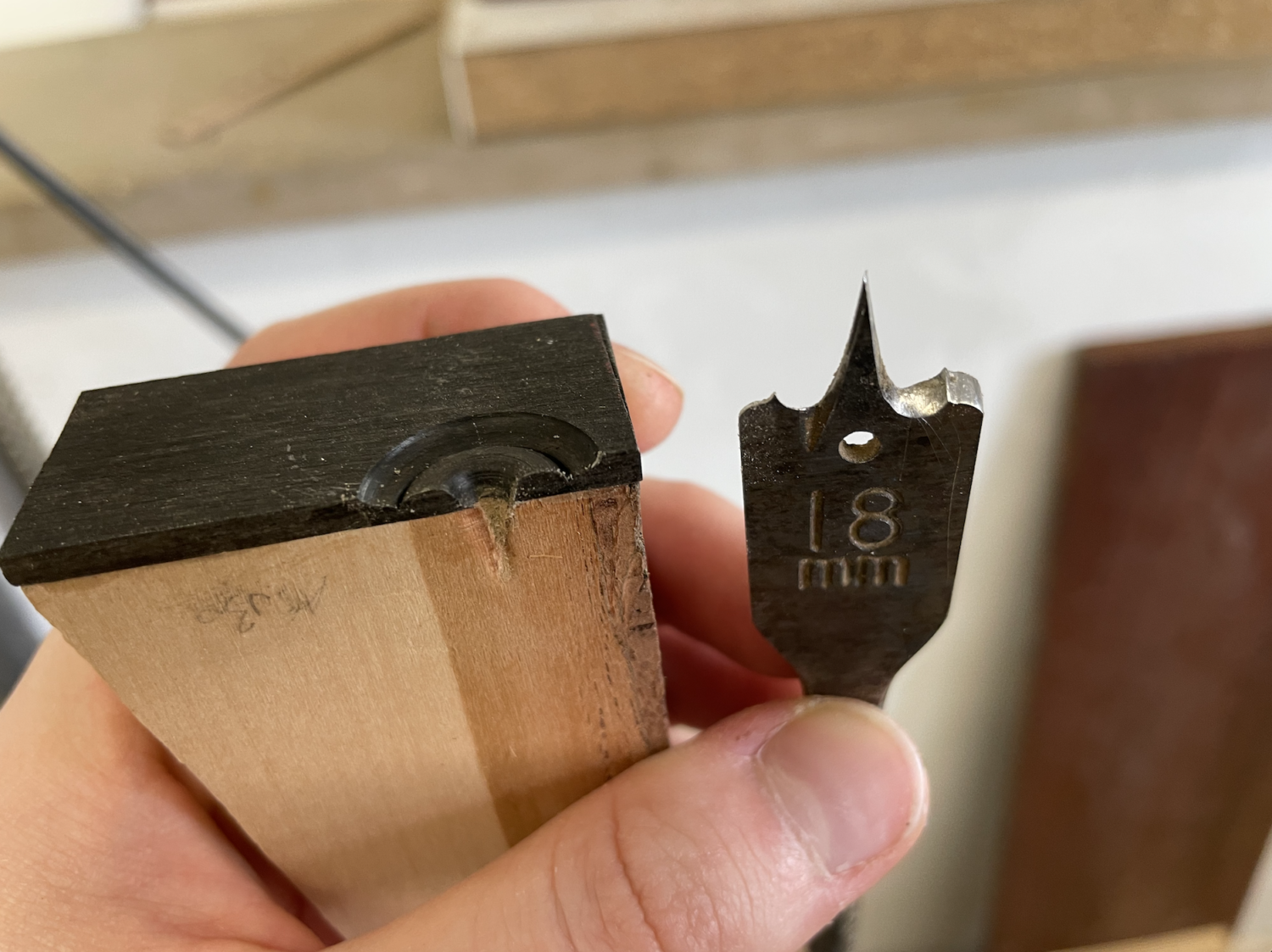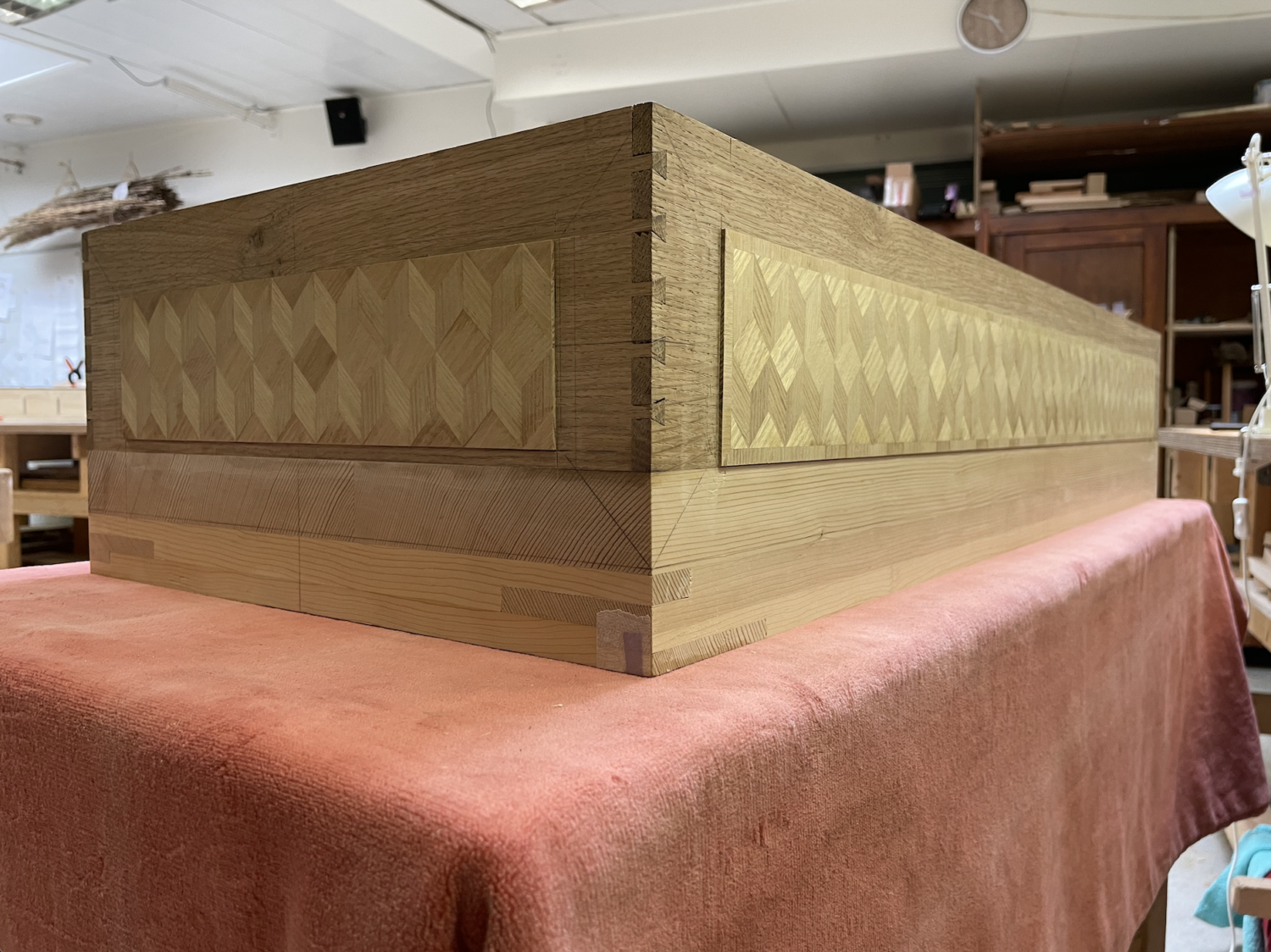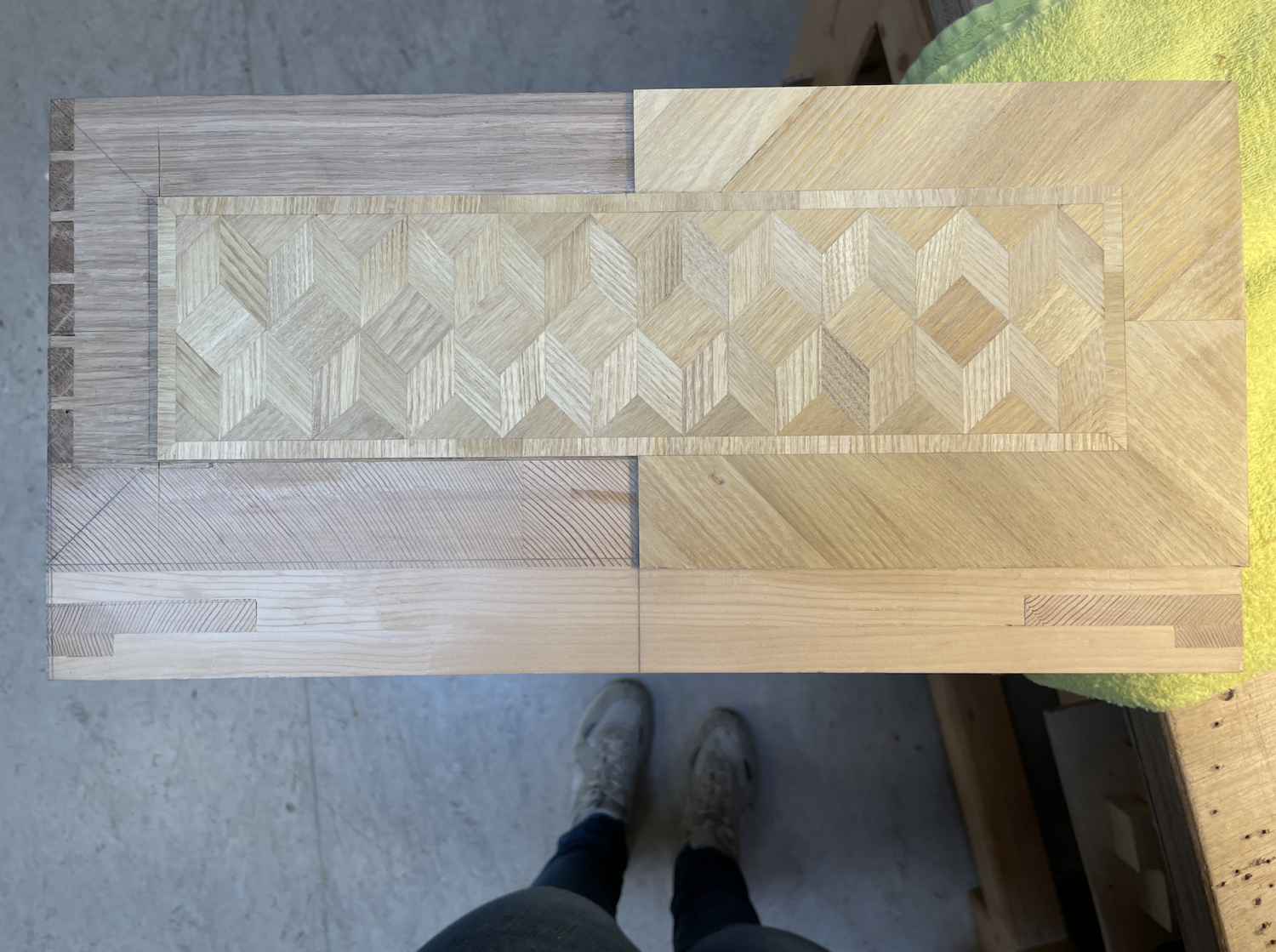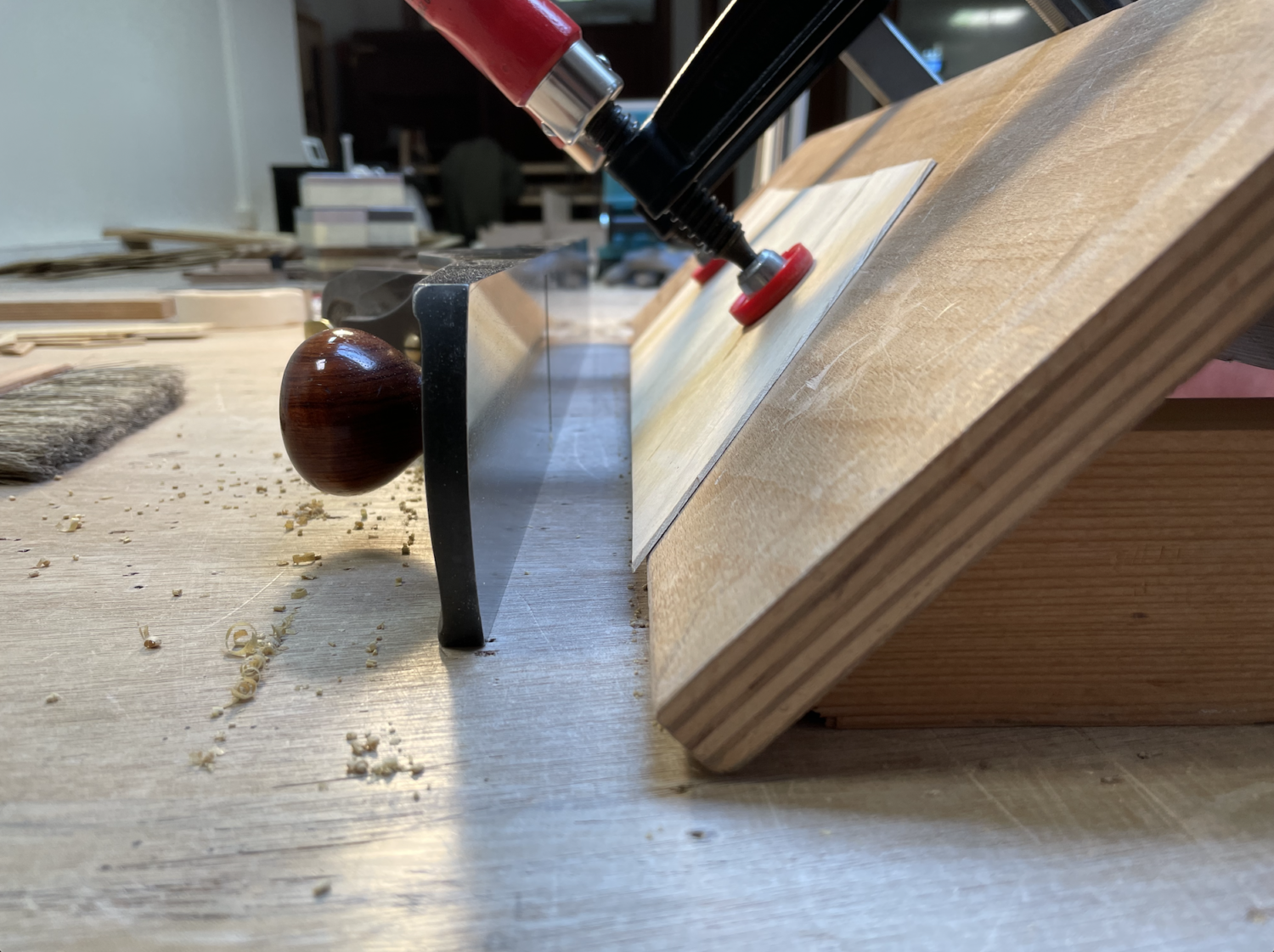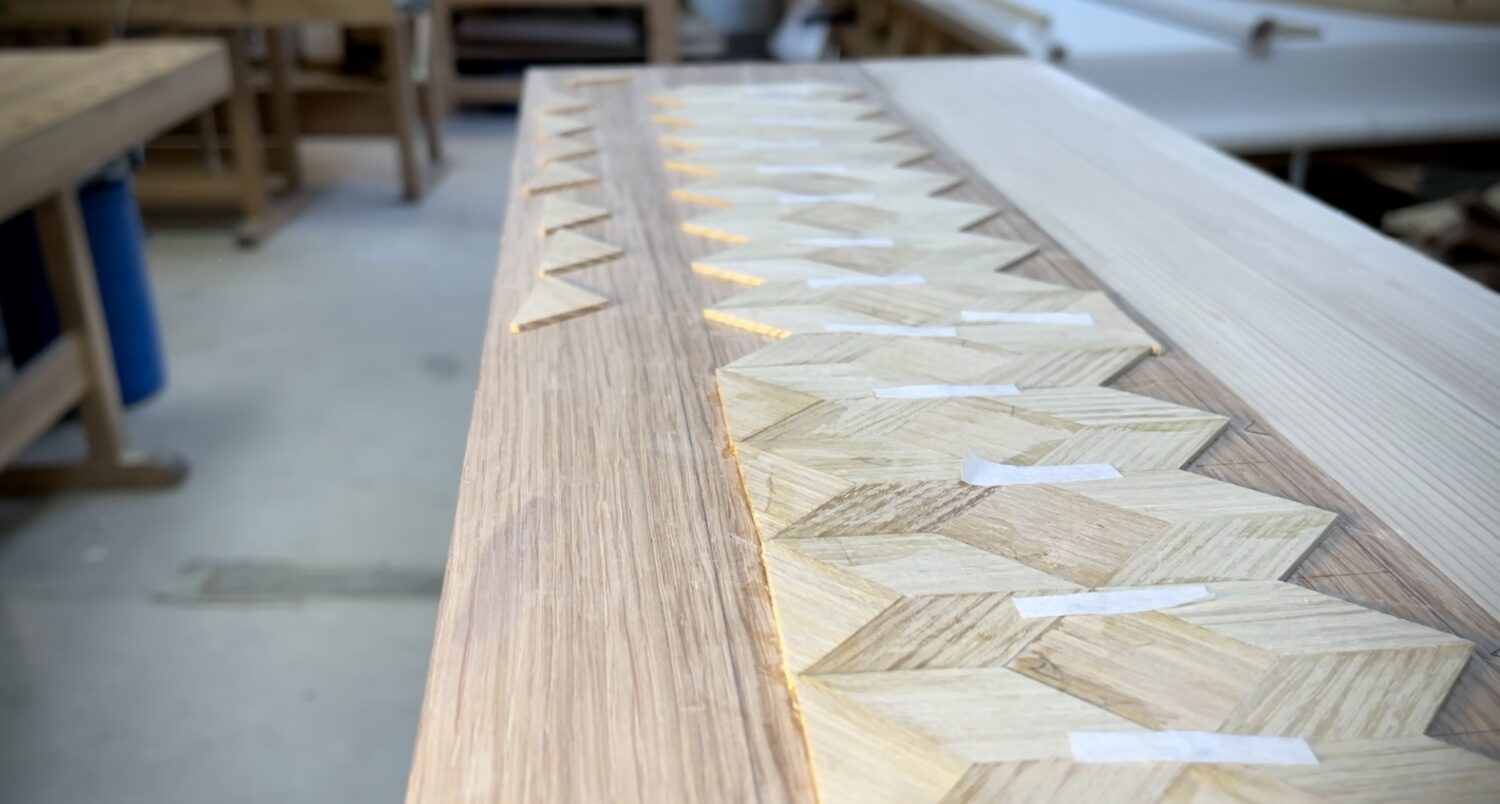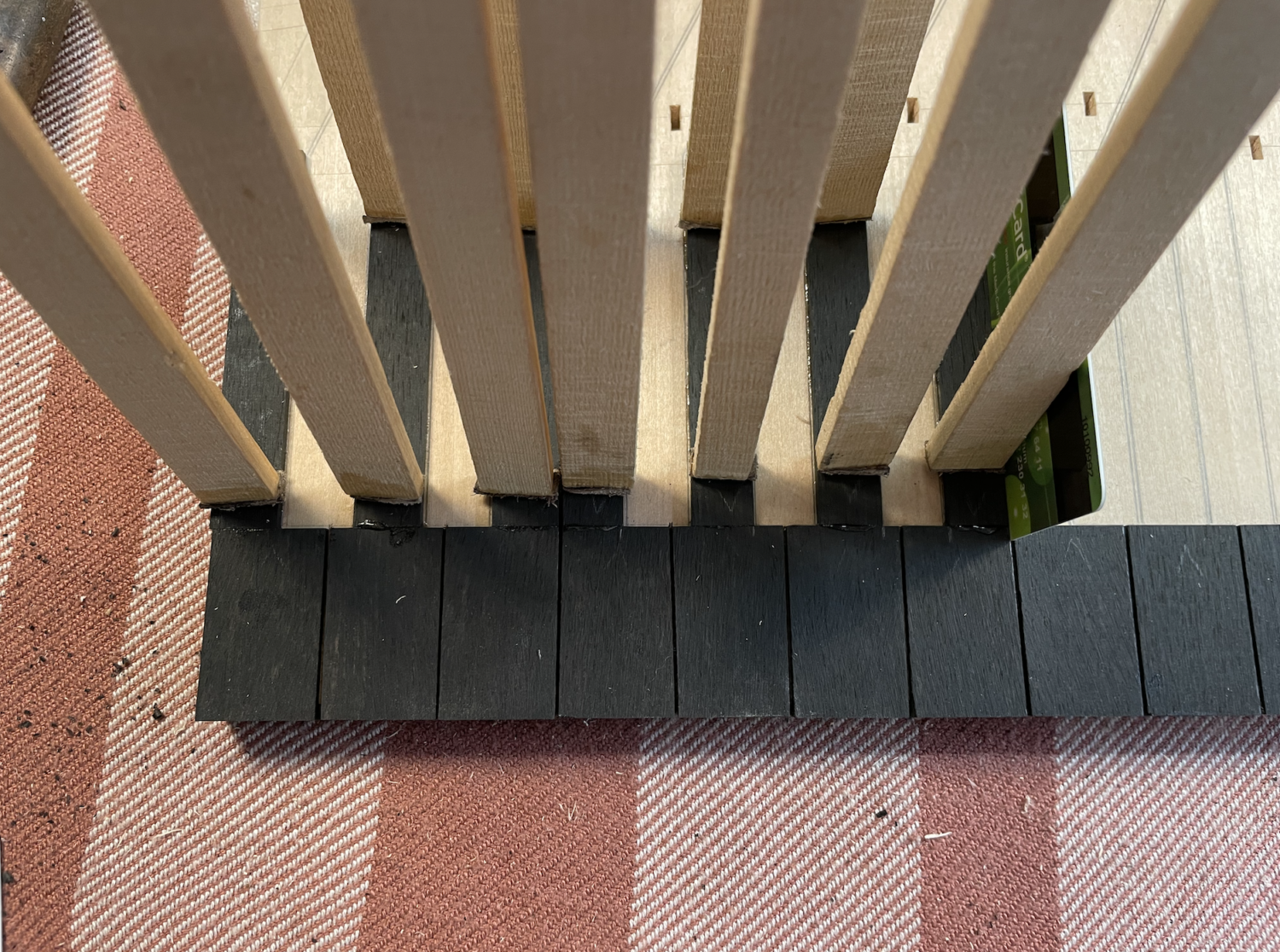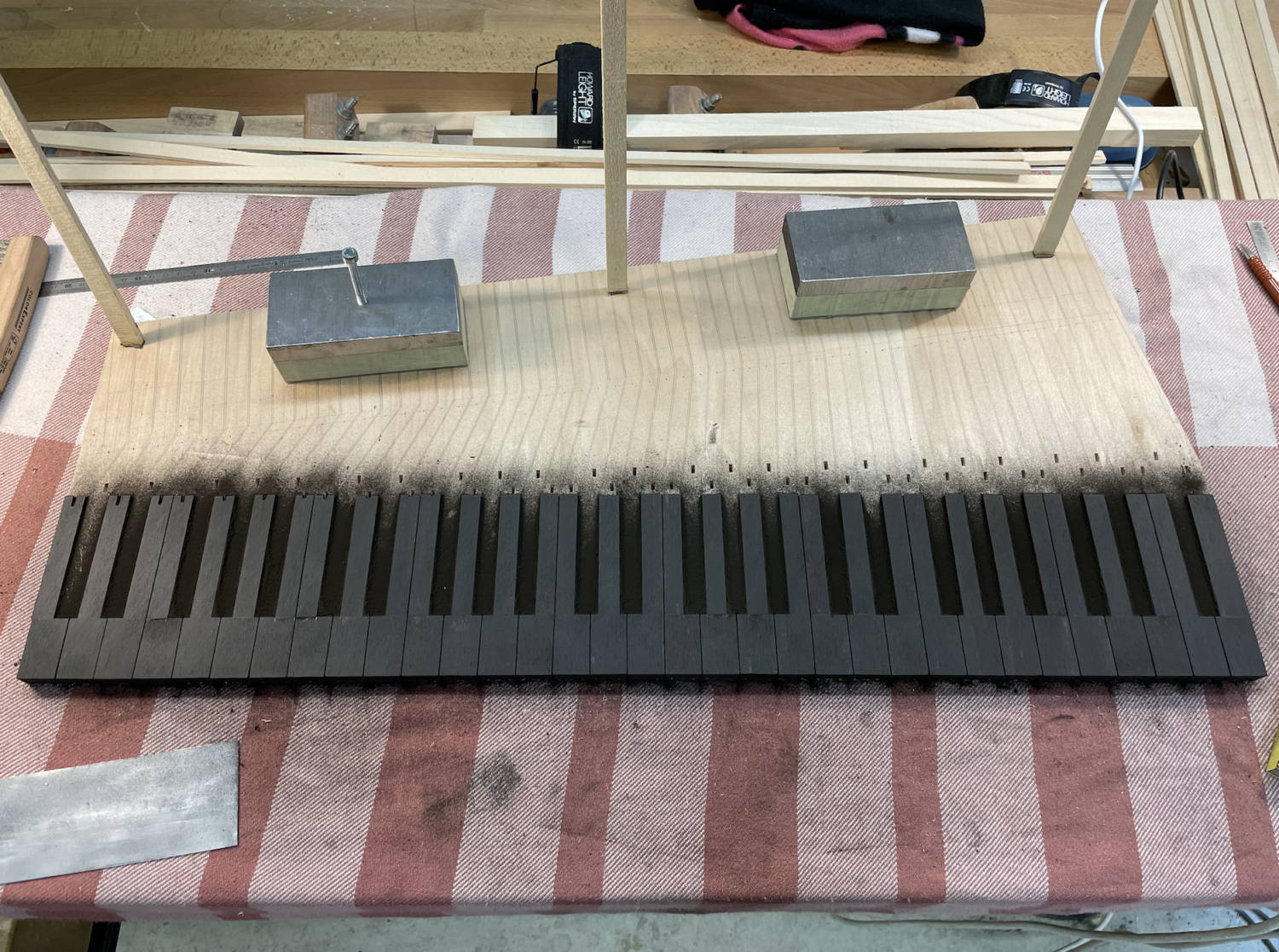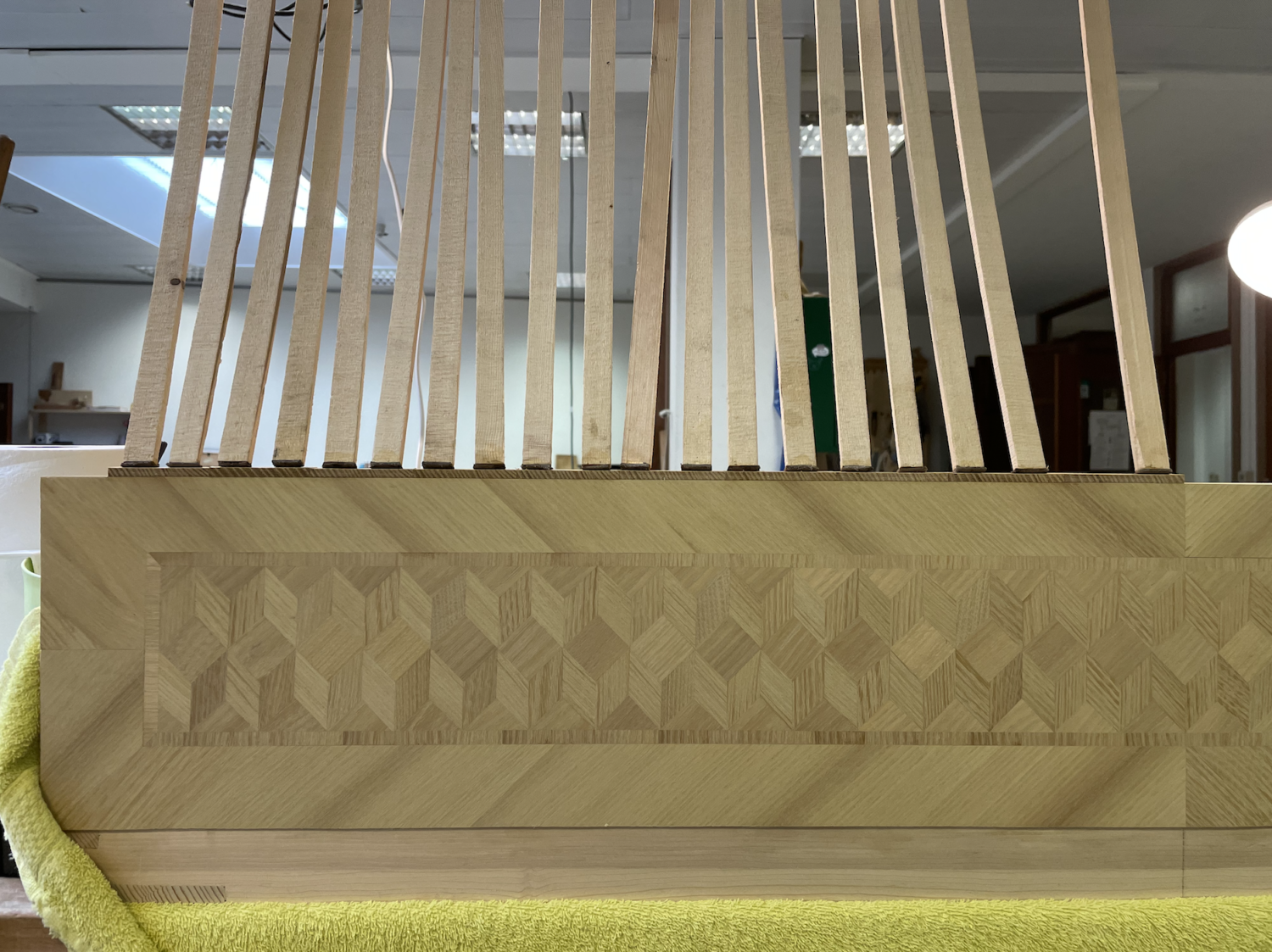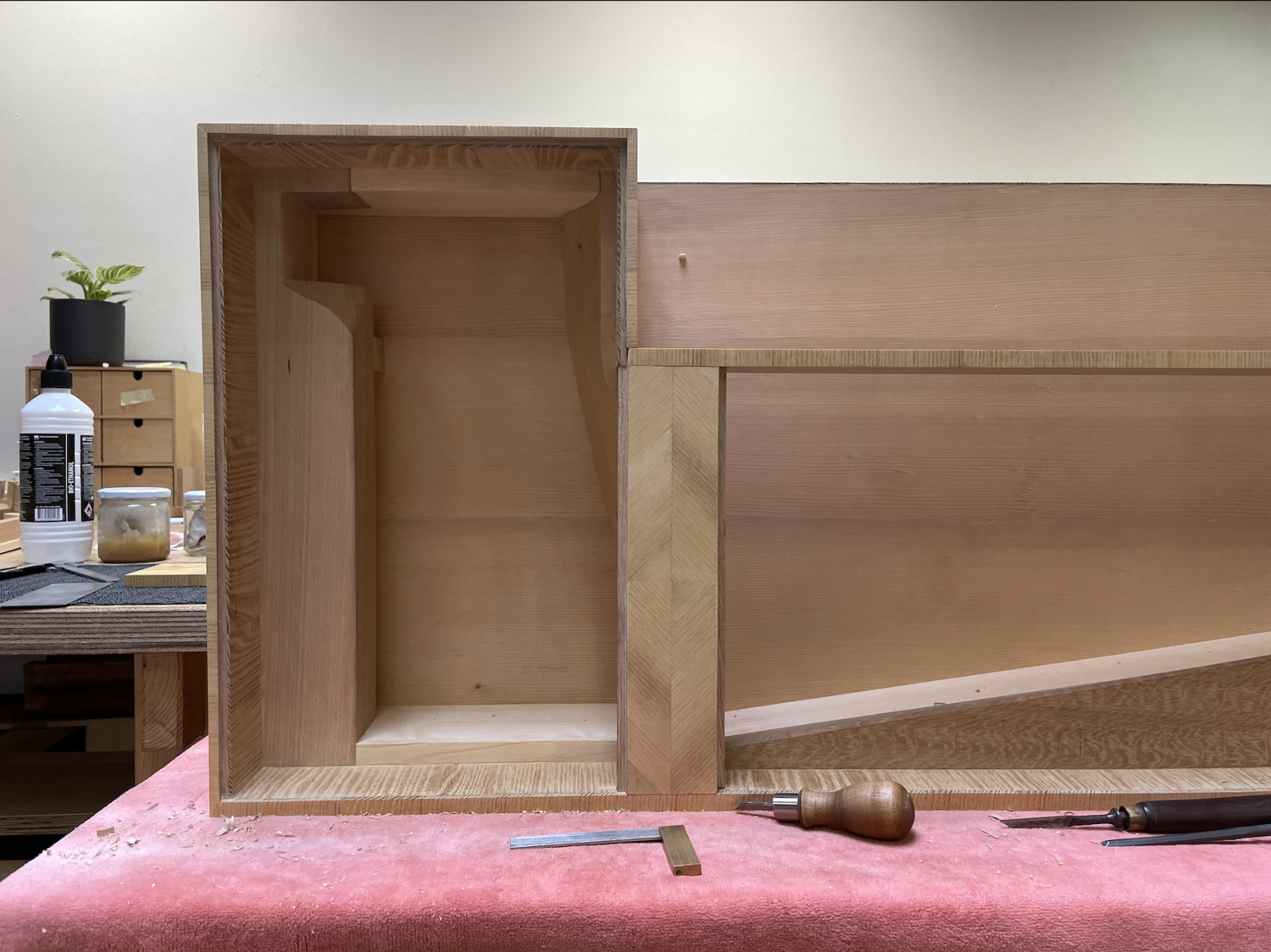Kamiej De Prez, Project Clavecin Roïal
instrumentenbouw
Darryl Martin
Francis Ponseele
Tijdens mijn bachelorstage in het Muziekinstrumentenmuseum in Brussel ben ik toevallig in contact gekomen met wat later een clavecin roïal uit 1783 van Johann Gottlob Wagner (1748-1789) uit Dresden bleek te zijn. Ik was op slag verkocht voor dit uitzonderlijk instrument. Opvallend in zijn subtiliteit, stil in zijn expressiviteit. Het sprak me ongelooflijk aan, wat wel opvallend is voor een instrument waar ik nog niks van kende. Een klavier in een zeer charmante kast, wat kan er nog tegengaan?
Doorheen het bouwproces zijn er onvermijdelijke goede en minder aangename momenten. Omdat ik echt achter mijn projectkeuze sta, lijkt het makkelijk om gewoon door te gaan.
Zo goed als alles wordt met de hand gemaakt, vooraf zorgvuldig uitgedacht hoe het destijds wellicht werd gedaan en er wordt steeds veel aandacht besteed aan het uitzoeken van het historisch correcte materiaal. De reconstructie moet weergeven hoe het origineel instrument er uitzag voor mogelijke aanpassingen en restauraties. Heel benieuwd om dit instrument te horen spelen en misschien ooit naast het origineel te zetten.
During my bachelor’s internship at the Musical Instruments Museum in Brussels, I accidentally came into contact with what later turned out to be a 1783 clavecin roïal by Johann Gottlob Wagner (1748-1789) from Dresden. I was immediately sold on this exceptional instrument. Striking in its subtlety, silent in its expressiveness. It appealed to me incredibly, which is striking for an instrument I didn’t know anything about yet. A keyboard in a very charming case, what could go wrong?
Along the way, there are some inevitable ups and downs during the whole building process. But because I really stand behind my project choice, it seems easy to just keep going.
Almost everything is made by hand, carefully thought out in advance how it might have been done at the time and a lot of attention is always paid to finding the historically correct material. The reconstruction should reflect what the original instrument looked like for possible adjustments and restorations. Very curious to hear this instrument play and maybe someday put it next to the original.
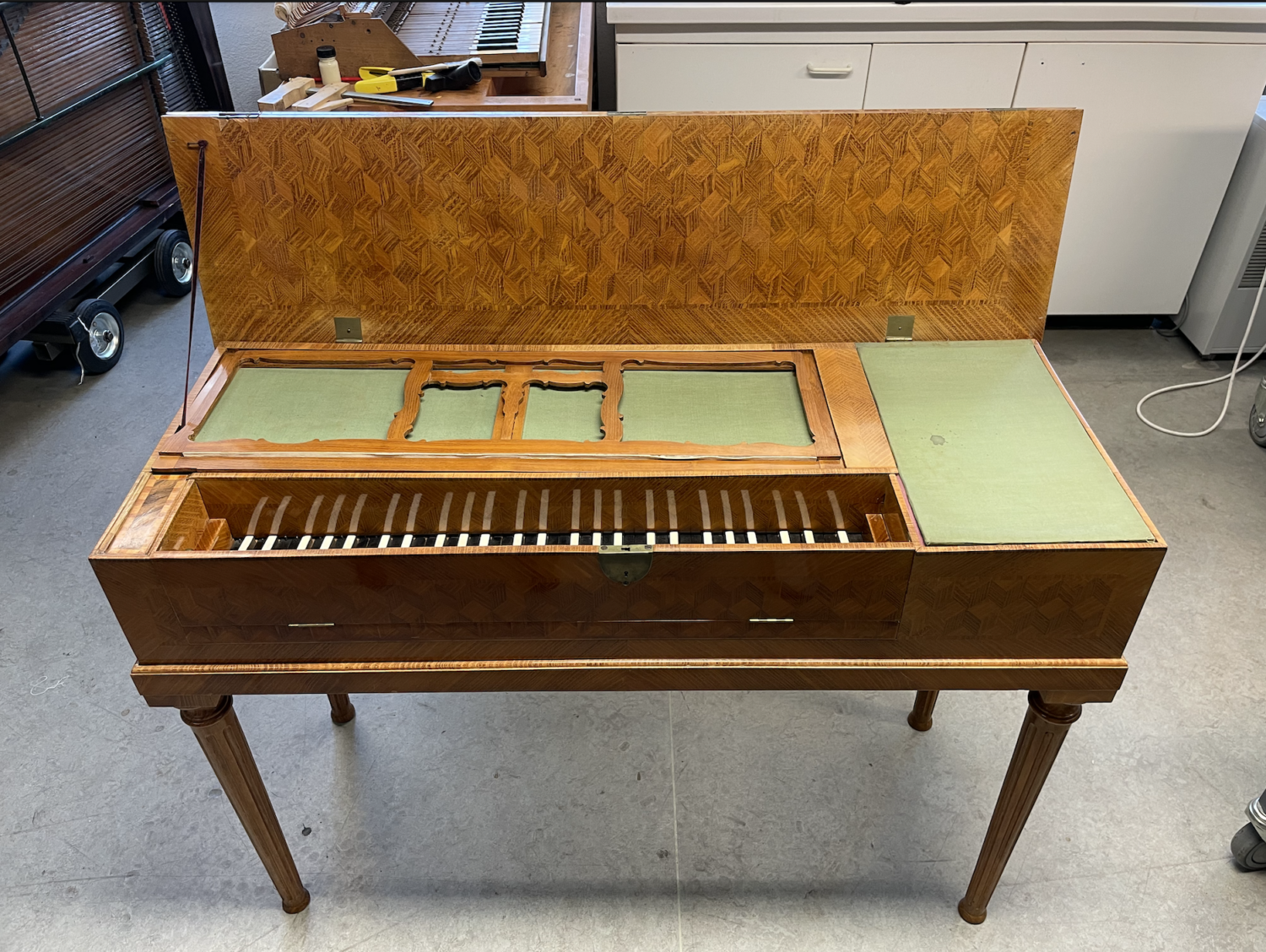
1783 – Dresden – clavecin roïal gebouwd door Johann Gottlob Wagner.
2019 – Muziekinstrumentenmuseum Brussel – toevallige ontmoeting met dit tot dan voor mij onbekend maar uitzonderlijk instrument.
De naam ‘clavecin’ laat iets anders vermoeden, maar de best beschrijvende benaming is ‘tafelpiano’, met de eigenschappen te kunnen klinken als pianoforte, klavecimbel, luit en harp. Ik ben meteen verkocht.
2019-2021 – reconstructie in het kader van mijn afstudeerproject.
Grondige studie van de originele bouwtechniek met veel aandacht voor het uitzoeken van het historisch correcte materiaal. Zo goed als alles werd met de hand gebouwd.
Ik heb getracht te komen tot een weergave van hoe het originele instrument er moet uitgezien hebben vóór eventuele aanpassingen en restauraties.
‘opvallend in zijn subtiliteit, stil in zijn expressiviteit…’
Reconstructie MI 1628.
Clavecin Roïal, Johann Gottlob Wagner
1783, Dresden.
inv. nr. MI 1628, Muziekinstrumentenmuseum, Brussel.
